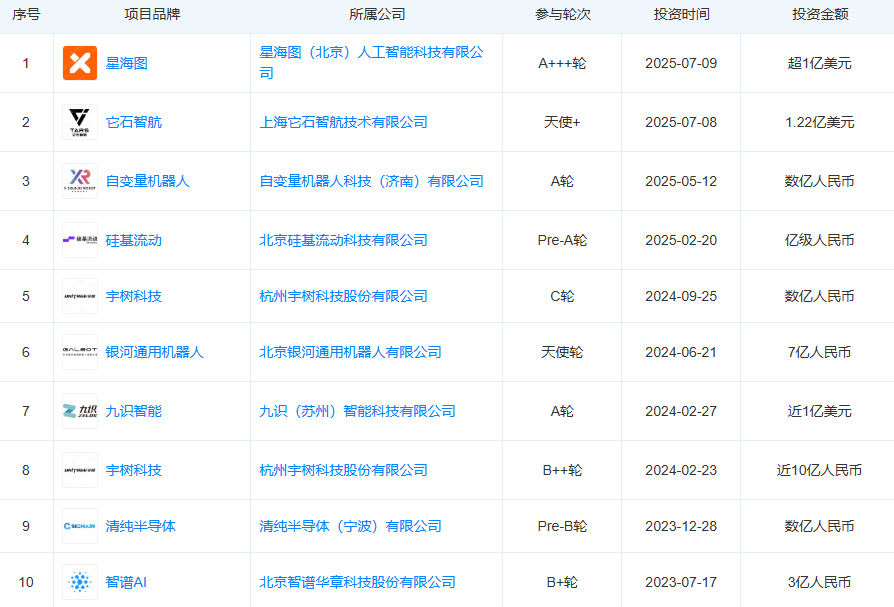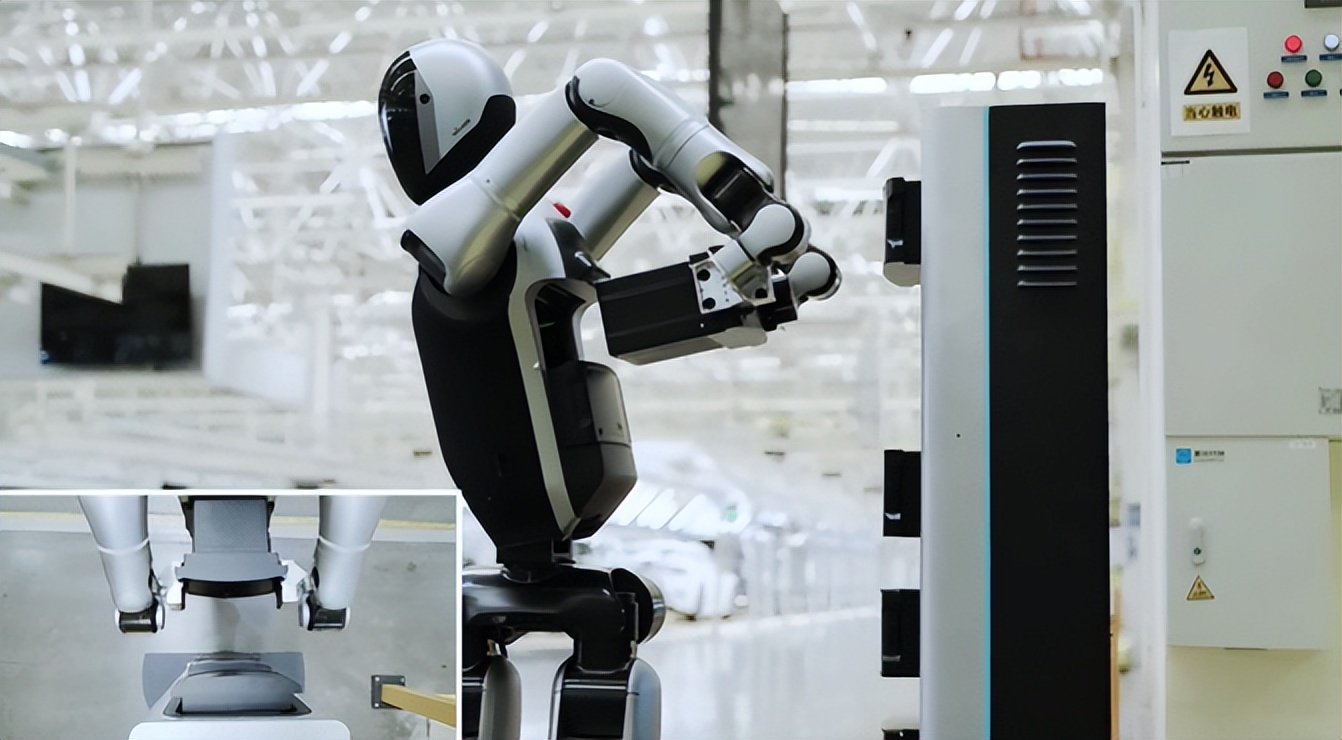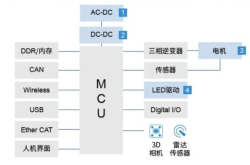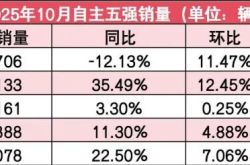Humanoid Robots Mass Production: Tech Giants Go 'All In'
![]() 07/24 2025
07/24 2025
![]() 485
485
The battle for food delivery supremacy has shifted gears, now focusing on the humanoid robot sector.
Funding for embodied intelligence is surging ahead. Following Meituan's substantial investments in Tashizhihang and Xinghaitu within a month, JD.com has led the charge in funding two leading players in the humanoid robot industry: Zhongqing Robots and Qianxun Intelligence. In the latter half of 2025, tech giants' bets on the robot sector have reached a fever pitch.
Behind this funding spree lies a collective vision among tech giants for the future. With the combined forces of policy, technology, and evolving scenarios, the pace of humanoid robots' mass production and deployment is surpassing previous expectations. As the demographic dividend wanes and service scenarios evolve, those who can pioneer the reconstruction of cost structures with robots will secure a formidable position in the trillion-dollar market.
Amidst this frenzy of capital and industry activity, can robots, akin to electric vehicles, experience a comprehensive boom fueled by China's robust industrial chain? How close are we to witnessing this "electric vehicle moment" for robots?
Is the end of instant retail and the internet wars heralded by robots?
Recently, after the State Administration for Market Regulation summoned Ele.me, Meituan, and JD.com, the market's focus has shifted from the sustainability of continuous money-burning and subsidies in the instant retail sector. Instead, technology has emerged as the new frontier in this "food delivery war".
In fact, the three giants are well-versed in the pros and cons of price wars. While embracing challenges, they have long pinned their hopes for "winning the new decade" on AI+robots.
According to Tianyancha, Meituan has invested in over 30 robot and related enterprises in the past three years. After the recent intensification of the food delivery war, Meituan has been making frequent moves, leading the funding rounds for Tashizhihang and Xinghaitu in early July.

Image Source: Tianyancha
Industrial giants like Meituan's investment objectives are clearly aimed at innovating their own businesses. As early as in their 2021 financial report, Wang Xing emphasized the importance of robots as intelligent hardware. Driven by various advanced technologies, including robots, there remains immense potential in the life services sector to enhance efficiency and reduce costs.
This sentiment is shared by instant retail giants. JD.com also views the robot field as a crucial battleground, adopting a dual-track strategy of "investment + self-research." The core objective is to bolster their business competitiveness and establish an industrial ecosystem.
In terms of outbound investments, JD.com has funded multiple embodied intelligent robot enterprises, such as Qianxun Intelligence, Zhiyuan Robots, Zhongqing Robots, and Xianglu Technology. JD.com's actions extend beyond mere investments; in March this year, the company established a dedicated embodied intelligence department, led by Shen Hui, former vice president of SenseTime Technology. Simultaneously, multiple internal teams are focusing on cutting-edge research and development in this domain. According to insiders, innovation and application in artificial intelligence, automation, and robotics technology hold high priority within JD.com.
The competition between JD.com and Meituan is but a microcosm of tech giants vying for a stake in the humanoid robot sector. Across the entire embodied intelligence sector, giants like Tencent, Alibaba, ByteDance, Baidu, and NetEase are also making frequent moves. For instance, Tencent, Alibaba, and Ant Group have invested in enterprises such as Unitree Robotics and Titan Robotics.
At the capital level, humanoid robot enterprises are accelerating their funding processes. Tech giants all foresee a bright future: as the demographic dividend wanes and service scenarios evolve, AI+robots will become pivotal in optimizing costs and exploring the trillion-dollar market.
The clustered entry of giants and substantial investments also signify that innovation and competition in the embodied intelligence industry will intensify, with the winners ultimately shaping the future industrial landscape. Notably, the impact of this transformation extends beyond the technology sector, poised to disrupt entire industries and society at large.
Giants versus startups: who will harness the dividends of this era?
Humanoid robots are poised to be the core driver of the next wave of industrial revolution. Recently, analysts at Morgan Stanley wrote in a report that robots are reshaping China's manufacturing industry. As they become smarter, more collaborative, and more affordable, they will exert a profound impact on society in the future.
It's worth noting that compared to the electric vehicle industry, the robot industry's growth trajectory may be swifter. The integration of the electric vehicle industry chain took over a decade, whereas the robot industry, leveraging the existing industrial foundation and capital catalysis, is expected to expedite the transition from technological breakthroughs to large-scale applications.
Since July, humanoid robot companies have accelerated their capital reserves and secured significant market orders.
On one hand, Unitree Robotics recently initiated an IPO, and Yuejiang Technology announced a new share placement to raise over HK$1 billion to accelerate technological R&D and expand its global market presence. On the other hand, Zhiyuan and Unitree jointly won a 120 million yuan procurement order for humanoid robots from a subsidiary of China Mobile. Just a week later, UBTech set a new record for the largest single order by a domestic humanoid robot enterprise.
Evidently, humanoid robots are accelerating the march towards industrialization, and the next phase will inevitably be marked by a battle for breakthroughs in the application ecosystem. In this battle, two possible industry layouts emerge for the humanoid robot sector.
One likely scenario is that tech giants will "acquire" the sector, accelerating its evolution into a multi-power paradigm.
Tech giants undoubtedly hold significant advantages in terms of capital and application scenarios. JD.com and Meituan can complete their ecological layouts by acquiring robot startups, then offset high R&D costs through internal business scenario applications, and validate the value of robots through operational efficiency improvements.
For example, Meituan is already exploring a new generation of instant retail business models integrating humanoid robots. In September 2024, Meituan and Yinhe General reached a strategic cooperation agreement to launch the world's first humanoid robot smart pharmacy solution, collaborating in multiple fields such as offline retail, smart warehouses, and smart logistics.
Of course, this does not imply that independent robot companies have no chance of breaking through. Conversely, the second possible path is for robot startups to capture niche markets with their technological innovation advantages and forward-looking layouts, then continuously expand their foundational platforms.
Currently, the field of humanoid robots is still in its nascent stages. In this regard, Wang Feili, China Industrial Analyst at UBS Securities, recently pointed out that even for straightforward tasks like moving boxes, considered among the earliest landing scenarios, robots' current performance only reaches about 30% of human efficiency. It remains challenging to predict who will emerge as the ultimate winner.
Wang Xingxing, CEO of Unitree Robotics, also previously stated, "If everything goes smoothly, some basic service or industrial applications will likely be promoted next year or the year after. However, household robots may lag slightly due to households' higher safety requirements and the relatively more mature technology needed."
This disparity in industrial rhythms offers a strategic window for startups. Many robot startups are amassing customer resources and technological barriers by making forward-looking layouts in the industrial field and competing for the right to define products. For instance, Qianxun Intelligence focuses on vertical scenarios like industrial inspections and realizes value definition through differentiated technology verification; UBTech has launched the autonomous battery-swapping humanoid robot Walker S2, planning to deliver 500 units for intelligent manufacturing within the year, demonstrating the scalability potential of related scenarios.

Image: Walker S2
Once the technology matures, these startups aspire to expand service scenarios from point to area, replicating DJI's vertical breakthrough path in the drone field.
Regardless, the critical juncture for humanoid robots to transition towards large-scale commercial use has arrived. According to Bank of America analysts' predictions, humanoid robots will witness an explosion of multi-industry applications within a decade. It is estimated that by 2030, annual sales of humanoid robots worldwide will reach 1 million units, and by 2060, the total number of humanoid robots will hit 3 billion units, equivalent to 0.3 robots per capita at that time.
The era of "everyone having a robot" is fast approaching. As the focal point of our times, it is entirely plausible that the humanoid robot sector will give birth to the next "Apple" or "Tesla".
Source: Pinecone Finance





